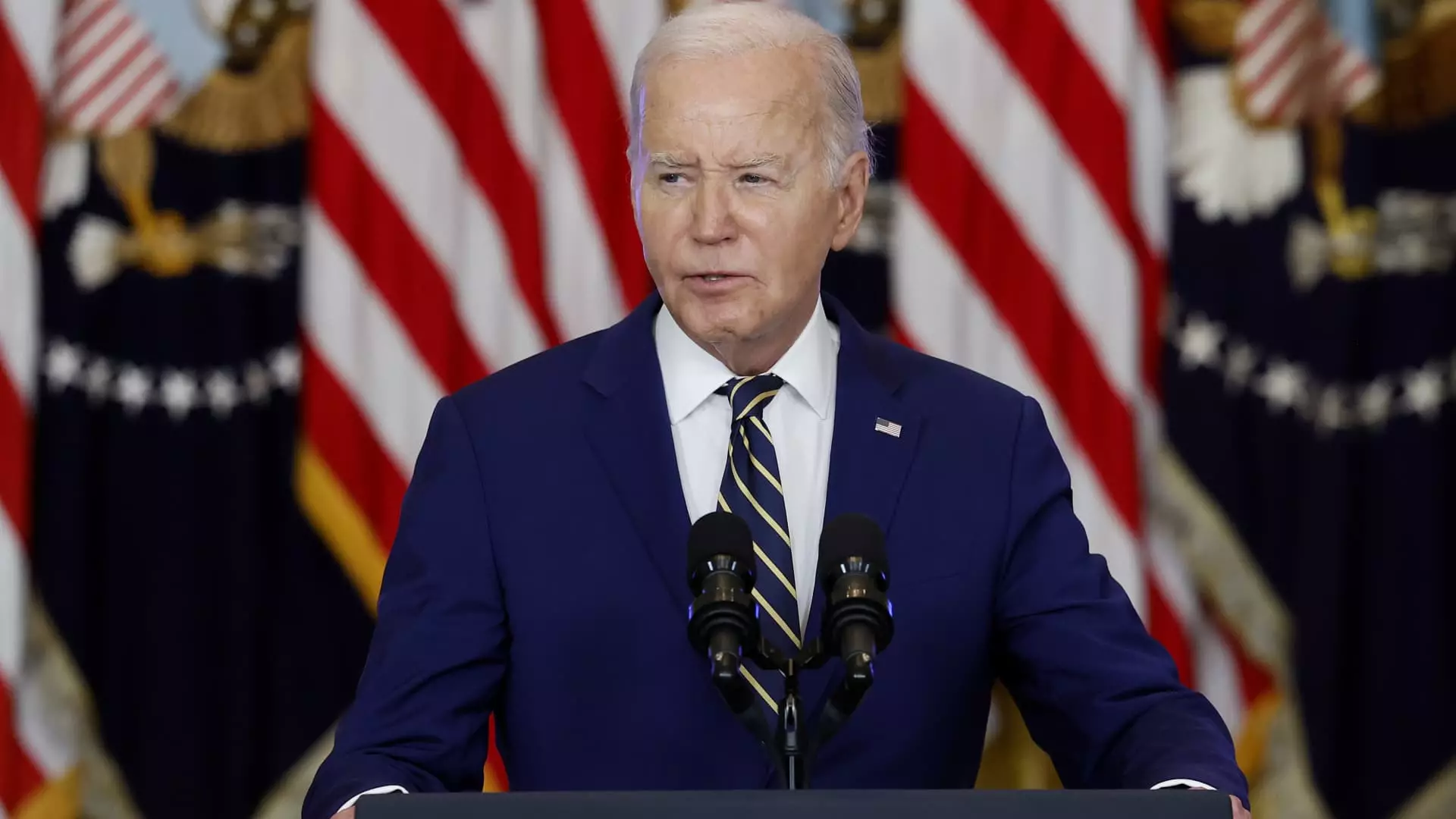In a bold move that underscores the Biden administration’s commitment to border security, the White House announced on Monday an escalation of asylum restrictions at the southern U.S. border. This decision comes as the administration seeks to quell voter concerns regarding immigration, portraying itself as firm in managing the surge in migrant encounters that has characterized the border landscape in recent years. By tightening the rules further than those introduced in June, the administration aims to demonstrate that it is taking actionable steps amidst a politically charged climate.
Under the new regulations, migrants seeking asylum will face stricter criteria, triggered by the volume of individuals attempting to cross the border. Previously, a cap was set at 2,500 encounters per day, at which point the U.S. government could begin limiting asylum access. The revised rules stipulate that the average daily encounters must drop below 1,500 for an extended period—specifically, for nearly a month—before any limitations can be lifted. Notably, the rules have been modified to count all children toward this threshold, expand the scope of the restrictions, and potentially hinder many who seek refuge.
This policy adjustment raises the question: Why implement these stricter measures when existing constraints have yet to be relieved? As reported, the two-month-old regulations have not been rescinded due to consistently high encounter rates. For example, the Department of Homeland Security recently noted that daily encounters still hover around 1,800—a figure that contradicts the premise upon which these new restrictions were justified. By extending the requirement to lower the average count over a more prolonged period, the current administration hopes to establish a more sustainable drop in migration flows, rather than reacting to temporary lulls.
Critics of the new restrictions have voiced their concerns, arguing that they represent a significant erosion of critical protections for individuals fleeing persecution. Immigration advocates are particularly concerned that these changes not only diminish the rights of asylum seekers but also contribute to an already daunting atmosphere for migrants considering the perilous journey to the U.S. border. The Biden administration, while praising the apparent decreases in border encounters since implementing the June regulations, faces mounting scrutiny regarding whether these reductions are a matter of effective policy or mere coincidence amidst a complex, multifaceted immigration crisis.
This dichotomy between intended and actual outcomes complicates the narrative of border security and immigration reform for the Biden administration, particularly during an election year. As immigration remains a critical point of contention within U.S. politics, the Biden campaign finds itself in a precarious position. With Republican nominee Donald Trump and other GOP figures capitalizing on the administration’s perceived failures to control migration, the pressure has intensified on the White House to deliver effective solutions that resonate with voters.
In a display of determined outreach, Vice President Kamala Harris recently visited the border region in Arizona, her first such visit as the Democratic nominee. Advocating for enhanced asylum regulations alongside a humanitarian framework for legal immigration, Harris’s statements reflected a strong desire to create a balanced approach to immigration reform—a message that resonates with voters who are increasingly polarized on the issue. “I reject the false choice that suggests we must choose either between securing our border and creating a system that is orderly, safe and humane,” Harris stated. This duality illustrates the ongoing struggle to find a comprehensive immigration strategy that aligns with both national security interests and humanitarian values.
While the Biden administration’s heightened restrictions do offer some exemptions—such as allowing victims of severe trafficking to apply for asylum—the effectiveness of these measures remains in question. The implementation of the CBP One appointment system seeks to regulate the influx of asylum seekers by requiring prior scheduling for official border entry; however, the stark reality is that the demand for appointments significantly exceeds availability, leaving many migrants in limbo. With only 1,450 appointments available daily and no indication that this number will be increased, the resilience of these new restrictions is likely to face considerable challenges.
The Biden administration’s toughened asylum rules signal its robust approach to immigration issues but may also generate significant backlash from advocates concerned about the implications for vulnerable populations. The ongoing tension between border security and humanitarian obligations underscores the complexity of U.S. immigration policy, raising critical questions about the efficacy and morality of these newly imposed restrictions in an ever-evolving landscape. The administration must navigate these challenges skillfully, striving to reconcile political pressures with the realities facing those seeking refuge within U.S. borders.

Leave a Reply